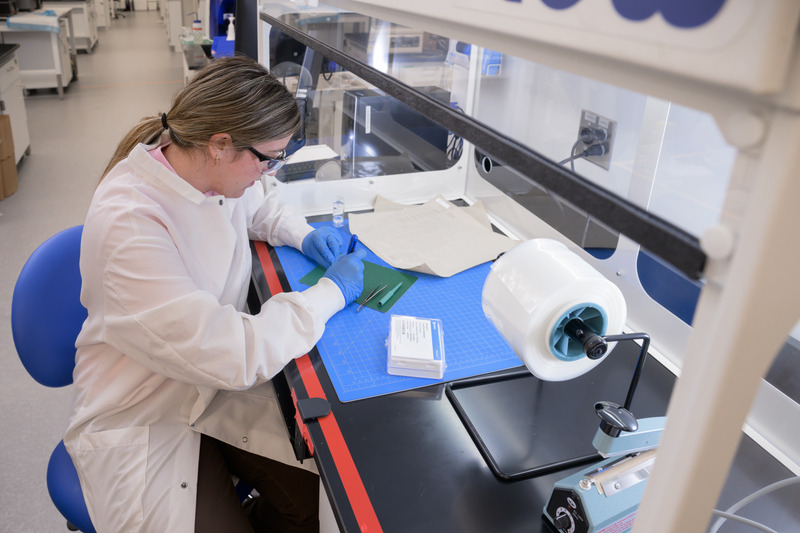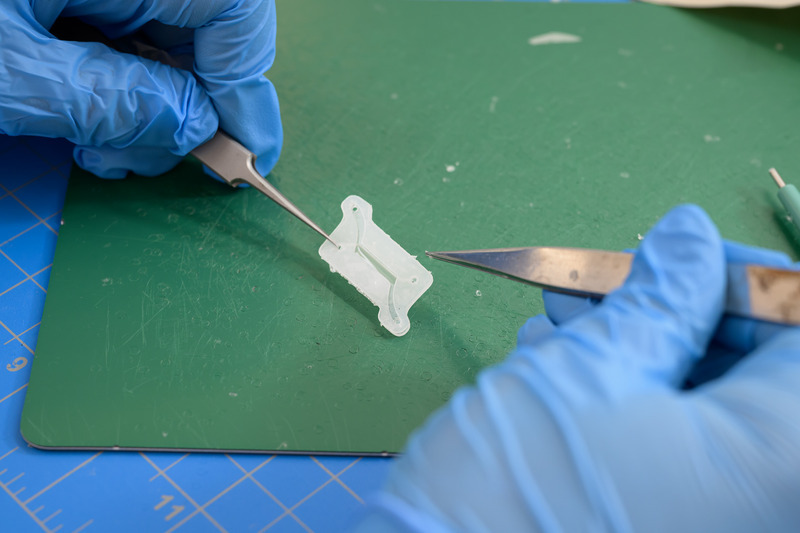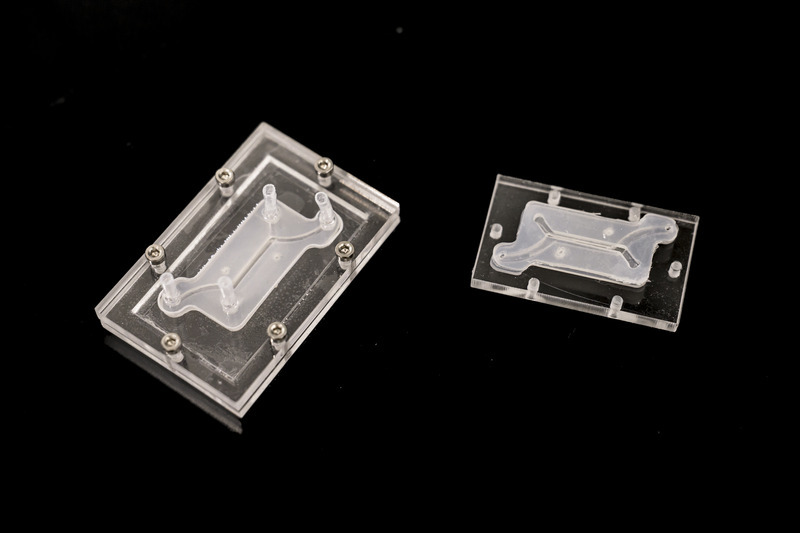


Making a difference
Photos by Kathy F. Atkinson September 05, 2025
UD undergraduate builds organ-on-a-chip models to help study female reproductive tract
Editor’s note: Every year, hundreds of undergraduates at the University of Delaware pursue research under the guidance of a faculty mentor, especially during the summer months. Such experiences provided by UD — a nationally recognized research university — can be life-changing, introducing young scholars to a new field, perhaps even the path to a future career, as they uncover new knowledge. These spotlights offer a glimpse into their world.
Microfluidic tissue models are tiny, promising systems with the potential to help researchers better understand how diseases progress and how drugs are transported in the body. This can help researchers develop and test promising treatment solutions.
University of Delaware senior Victoria McKeown, a biomedical engineering major from Philadelphia, Pennsylvania, is exploring the design of microfluidic organ-on-a-chip devices to better understand disease progression and drug transport in the female reproductive tract under the advisement of Jason Gleghorn, UD associate professor of biomedical engineering. Gleghorn is a UD inventor, whose work is supported in part through the National Science Foundation’s Accelerating Research Translation (ART) program at UD. McKeown’s summer experience was funded through the Delaware INBRE Summer Research Program.
Q: Why did you want to pursue this? What intrigues you about the topic?
McKeown: Originally, I wanted to do work relating to tissue engineering replacement organs for organ transplants. When I found out about Dr. Gleghorn’s lab and saw a new use for making tissue models for benchtop testing, also known as prototype testing, it opened a new door toward my goal of helping advance medicine. I wanted to learn how these tissue-model systems interact with different environments, cell types and more.
I was also drawn to the Gleghorn lab's dedicated focus on clinical solutions for women's health, maternal-fetal health and preterm birth. As a fan of history and a student in the biomedical field, I've often come across instances where certain groups have been overlooked in medical research and care. It's exciting to be part of a lab that is actively working to address these historical disparities and to improve outcomes for such a crucial, yet sometimes underserved population.
Q: Why does research like this matter?
McKeown: This type of research directly impacts human health and real lives. By concentrating on the female body, our research allows for a more detailed understanding of its unique systems. For instance, our team’s dedicated focus on conditions like bacterial vaginosis (BV) and sexually transmitted diseases (STDs) in females enables us to gain insights into how cells interact within the female physiology, how mucus production affects this, and how models differ depending on a woman’s stage of life. Such targeted information is essential for breakthroughs necessary to effectively treat disease. The more we learn through this focused research, the more it helps the scientific community better understand and address complex medical questions, ranging from studying diseases to developing new treatments and advancing technologies such as microfluidic devices.

Q: What does your daily research entail?
McKeown: A significant portion of my time is dedicated to hands-on activities in the lab. One day, I might be building 3D-printed “organ-on-a-chip” devices and testing how liquids flow through them to replicate the flow seen in our human organs. Another day, I might be adding collagen and/or seeding cells into the device and then subjecting it to flow. This mimics how cells interact with each other and their environments within the body. These experiments help us understand and test ways to treat or mitigate disease. I also spend time building computational models of the devices. The primary purpose of this computational work is to generate validated data on how the devices perform, which we are unable to obtain through physical experimentation in the lab.
Q: What’s the coolest thing about being involved in this project? Have you had any surprising or especially memorable experiences?
McKeown: The coolest thing for me has been seeing how many applications this project can have. We have the capability to model different organ systems by adjusting the device's geometry and the cellular components. This allows us to examine phenomena such as cell interactions, mucus secretions and mechanical responses, and, in some cases, to focus on the fluid dynamics of the devices. And this only covers the parts I've personally been exposed to. We also send devices to other labs in the United States and in multiple countries across the globe, some of which have their own modifications to look further into other areas of the field.

Q: Is there anything you've discovered about yourself and your career goals as you've worked on the project?
McKeown: Working on this project has confirmed that the research space is where I want to make my difference. I had debated for a while about my role in the scientific community and whether continuing my education in the biomedical field was the right path for me. However, seeing the collaborations on projects like this, as well as the potential impact our work can have on human health, has made my goals remarkably clear.
When I expanded my work into the computational space on this project, I found that I enjoy the fluid dynamics and wet lab work that I've done in classes and in earlier research in this lab, and I also really enjoy making connections through the computer. As I've learned more about both aspects, my enthusiasm for the work has continued to increase.
Q: What do you enjoy doing in your spare time?
McKeown: In my spare time, I enjoy playing rugby for the UD Women’s Club Rugby team, reading books, spending time with family and friends, and learning history.
Contact Us
Have a UDaily story idea?
Contact us at ocm@udel.edu
Members of the press
Contact us at mediarelations@udel.edu or visit the Media Relations website

